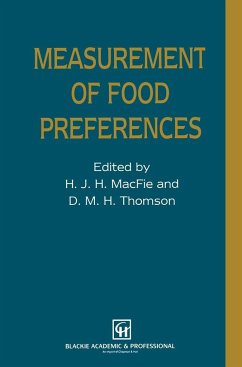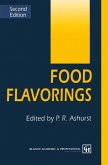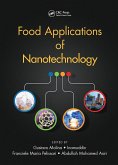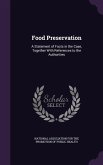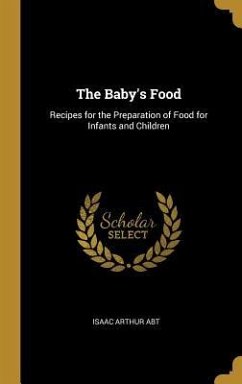1 A measurement scheme for developing institutional products.- 1.1 Introduction.- 1.2 Phase I. Consumer marketing.- 1.2.1 Whom to test.- 1.2.2 What to test.- 1.2.3 How to test.- 1.3 Phase II. Individual item sensory testing.- 1.3.1 Trained and consumer panels.- 1.3.2 Choice of rating scales.- 1.4 Phase III. Consumer meal testing - laboratory.- 1.4.1 What is a meal?.- 1.4.2 Acceptance and consumption.- 1.5 Phase IV. Consumer meal testing - field.- 1.5.1 Realism.- 1.5.2 Test population.- 1.5.3 Adhering to test protocol.- 1.5.4 Item and meal acceptance.- 1.6 Phase V. Prototype testing.- 1.7 Phase VI. Extended ration use validation.- 1.8 Phase VII. Quality control testing.- 1.9 How to use the seven-phase testing sequences.- References.- 2 Appropriateness as a measure of the cognitive-contextual aspects of food acceptance.- 2.1 Introduction.- 2.2 Description of procedures for appropriateness, item by use technique.- 2.2.1 Selection of stimuli.- 2.2.2 Format of the questionnaire.- 2.2.3 Selection of respondents.- 2.2.4 Collection of non-appropriateness data.- 2.2.5 Data collection.- 2.2.6 Analysis of appropriateness data.- 2.2.7 Use of principal component analysis.- 2.2.8 Analyses with non-appropriateness data.- 2.3 Conclusions.- References.- 3 The repertory grid approach.- 3.1 Introduction.- 3.1.1 Food choice.- 3.1.2 Personal construct theory.- 3.2 Methodology.- 3.2.1 Repertory grid method.- 3.2.2 Statistical analysis of repertory grids.- 3.2.3 Generalised Procrustes analysis.- 3.3 Application.- 3.3.1 The different aspects of food choice.- 3.3.2 Investigating the food: general perceptions, sensory characteristics and reasons for choice.- 3.3.3 Investigating consumers.- 3.3.4 Investigating contexts of use.- 3.3.5 Interaction of foods, consumers and context of use.- 3.3.6 Extending repertory grid methodology: laddering, preference mapping and other procedures.- 3.4 Conclusions.- References.- 4 Focus group interviewing.- 4.1 Introduction.- 4.1.1 Advantages and limitations of focus groups.- 4.1.2 Myths about focus groups.- 4.2 The process of conducting focus groups.- 4.2.1 Designing a study.- 4.2.2 Developing the questioning route.- 4.2.3 Recruiting participants.- 4.2.4 Moderating.- 4.2.5 Analysis.- 4.2.6 Validity and reliability - Can we really trust this stuff?.- 4.3 Summary.- References.- 5 Product optimization: approaches and applications.- 5.1 Background and applications.- 5.1.1 What is product optimization?.- 5.1.2 Historical background.- 5.2 Steps in a designed experiment and product optimization study.- 5.2.1 Selection of variables and their levels - systematic versus haphazard designs.- 5.2.2 Questionnaire development.- 5.2.3 Test implementation.- 5.2.4 Analysis of the data - a multi-step process.- 5.3 A case history - salsa.- 5.3.1 Experimental design.- 5.3.2 Results.- 5.3.3 Analysis phase 1, R-R analysis.- 5.3.4 Analysis phase 2, S-R (stimulus-response) analysis.- 5.3.5 Three examples of optimization technology.- 5.4 An overview.- References.- 6 Preference mapping in practice.- 6.1 Introduction.- 6.1.1 An alternative approach.- 6.2 External preference analysis - Prefmap.- 6.2.1 The method.- 6.2.2 Case study using external analysis.- 6.2.3 Problems with external preference mapping.- 6.3 Internal analysis - MDPREF.- 6.3.1 Method.- 6.3.2 Case study using internal analysis.- 6.4 Advantages and limitations of preference mapping.- 6.5 Aspects of conduct.- References.- 7 An individualised psychological approach to measuring influences on consumer preferences.- 7.1 Introduction.- 7.2 Measuring individual consumer preferences.- 7.2.1 Acquisition of food preferences.- 7.2.2 Relating determinants to food preferences: the acceptance triangle.- 7.2.3 Principles of consumer preference measurement.- 7.3 Psychophysical acceptance parameters.- 7.3.1 Ideal point (IP).- 7.3.2 Rejections ratio (RR).- 7.3.3 Tolerance discrimination ratio (TDR).- 7.4 Aggregation of individuals' acceptance parameters.- 7.5 Measuring determinants of acceptance i...

